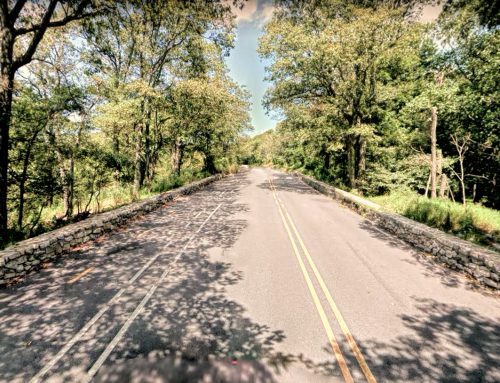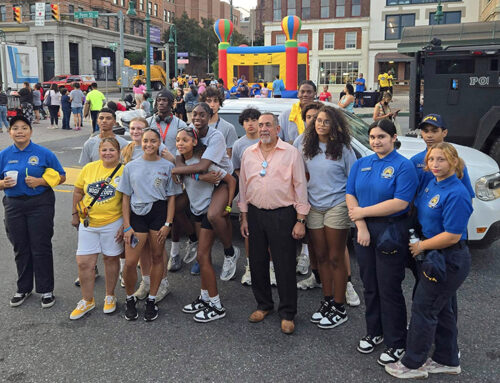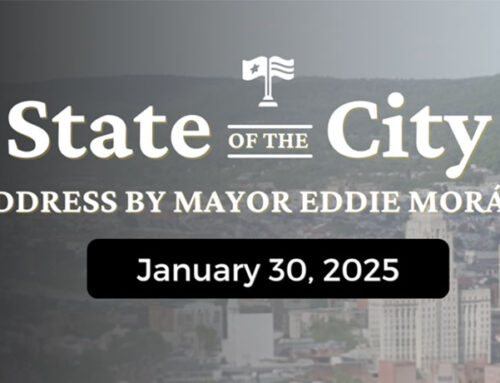A recent post by GoReadingBerks on Facebook sparked the interest of the public and attracted the attention of Reading City Council as to the status of repairs to Reading’s Pagoda.
The iconic building on Duryea Drive has been closed since the start of the pandemic. The neon lights on the Pagoda to guide Santa did not blink this past Christmas because the electrical system and other elements at the Pagoda are in need of repairs and replacements.
Closed at the beginning of the pandemic, the City conducted a safety review of the Pagoda, and came up with a plan to address needed upgrades and repairs.
In October 2021, new parking spots, ADA accessible parking and ramps, freshly paved roadways, road realignment and installation of three gates to prevent late night gathering at the Pagoda was completed.

While visitors can once again park and view the Pagoda, the inside remains closed as the city prepares to make repairs and upgrades.
Councilwoman Marcia Goodman-Hinnershitz has taken a special interest in the Pagoda due to its significance and location within District 2, which she represents.
She and Councilwoman Donna Reed serve as council representatives to the Foundation for the Reading Pagoda, formed in 2013 to oversee management of the facility.
“The clear message to the public is we don’t want to deprive you of going into the building,” said Goodman-Hinnershitz, “but we also have to make sure that everything is in line as far as all the work that is going to be done.”
A contract was awarded to a firm to assess the property.
Beyond initial studies, focus will be on upgrading the fire suppression system, securing the foundation and analyzing needed repairs for plumbing, electricity and heating and air; something that has no clear time frame or cost at present.
The sidewalks, stairs and railings are also in need of repair and sections of the retaining walls on Duryea and Skyline drives are bowing and in danger of crumbling. A 20-foot-by-20-foot section, which collapsed in 2006, was reinforced with concrete.
The city is committed to using city public money for the Pagoda but is hoping that its regional partners will help share with some financial assistance or some kind of shared responsibility to move forward.
This is another project with the potential for a huge sticker shock but there are federal funding opportunities. Councilwoman Donna Reed recommended meeting with preservation agencies at the state and federal levels to investigate possible funding opportunities.
A detailed report of the extent of work that needs to be done to the building should be available soon.
History
The Pagoda is an iconic and historic treasure that the City of Reading owns and maintains for future generations.
Commissioned in 1906 at a cost of $50,000 by William A. Witman, Sr., to cover his stone quarry, the Pagoda was completed in 1908. It was originally intended to be a luxury resort atop Mt. Penn but due to the bank foreclosure and the denial of a liquor license, Witman never opened the Pagoda. By 1910, the Pagoda and surrounding 10 acres were deeded to local businessman Jonathan Mould and his wife, Julia (Bell). On April 21, 1911, they “sold” the Pagoda to the City of Reading for the sum of $1. Since then, the Pagoda has been owned, loved and cared for by the City of Reading and its citizens.
The Pagoda is seven (7) stories high, 28 feet wide, 50 feet long and stands over 620 feet above the City of Reading and 866 feet above sea level.
The walls are five (5) feet thick at the base, tapering to two (2) feet thick at the top of the second floor. From there to the top, there are frame-covered with terra-cotta shingles – which equates to approximately 60 tons of tiles on it.
It is currently anchored to the mountainside with 16 tons of bolts. The inside walls are concrete plaster with trim. The stairways are made of solid oak.
There are approximately 87 steps to the top. This is the only Pagoda in the world that has a fireplace and chimney.
Before the days of radio broadcasting, the lights flashed as signals to the people of the City. Morse Code was used to direct firemen, promote fundraising campaigns and gave the public results of sporting events. The Code was based on the lights – the white light was a dash and the red light signified a dot.
The bell on the 7th floor was cast in Japan in 1739. It was purchased by Mr. Witman in 1906 and was shipped via the Suez Canal to the New York Harbor. It arrived in Reading on May 5, 1907 by railway.
The fish sculptures on the roof are to protect the Pagoda from any fires.





